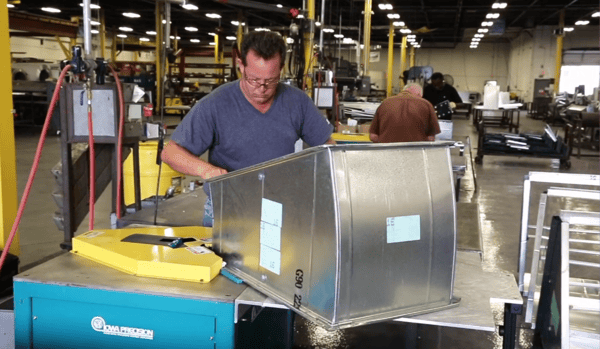In a recent webinar with Trimble, we discussed the growing trend of prefabrication for sheet metal contractors. Not only did we touch on what prefabrication is and why contractors are taking notice, but we also discussed how prefabricating helps enhance your workflows and improve efficiency both in the shop and on the job site. Here are some of the main points of our sheet metal prefabrication webinar, including its benefits for contractors and lean manufacturing.
To watch the full webinar, click here.
Why Prefabrication for Sheet Metal
Prefabrication is the process of manufacturing and assembling sections of ductwork (or other sheet metal products) in the fab shop rather than on the job site. For many reasons, prefabrication is becoming the norm in sheet metal industries. Some of the benefits of prefabrication that make it an attractive option for contractors include:
- Safety: Prefab brings the work from the field back into fab shop. You can work more safely using your in-house equipment and setup. Some safety benefits in the fab shop include adjustable height workstations, good lighting, and quality ventilation, all of which keep your techs safe and healthy.
- Controlled environment: Job sites tend to take on their own personas. Simply put, you don’t know what you’re getting into until you arrive, but with prefabrication, you don’t go in as blind.
- Increased quality: Putting your product together in a controlled environment means better quality and fewer mistakes that need to be corrected in the field.
- Reduced waste: Prefabrication leads to less wasted material and labor. It also creates less waste because of reduced shipping materials.
- Increased productivity: You can control all aspects of productivity when your ducts and fittings are fabricated and assembled right in your fab shop.
- Fewer labor hours in the field: By keeping your technicians in-house instead of sending them to the field, their time is often spent more productively and at normal pay rates. Prefabrication also helps you avoid regional field labor shortages.
- Environmental impact: Weather delays and other environmental disruptions are less involved when you prefabricate.
- Deadline and schedule optimization: Prefab products can be on-site within days. Just in Time.

Shop Workflow with Lean Principles and Practices
In the duct fabrication industry, fittings often cause workflow bottlenecks because workers are waiting on machines, and other tasks are done by hand. Your fittings team is constantly waiting on plasma cutters, corners, screws, vanes and more. While it can be difficult to limit liabilities in fittings, we're constantly striving to find better workflows. Solutions like conveyor tables with an assembly line and being in a controlled atmosphere all lead to better productivity and leaner practices. Producing straight duct from a coil line with taps and collars and access doors precut within the coil line lends itself to this pre fabrication practice. Anecdotally, contractors who utilize such a coil line can see up to a 40% reduction of job costs. That means more efficiency in your corner and profits in your bank.

